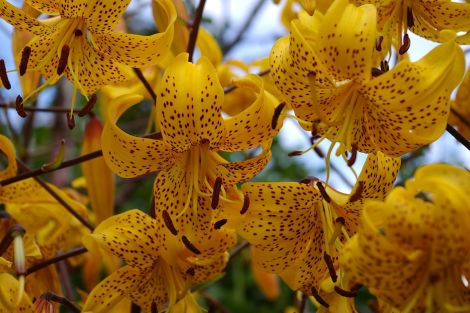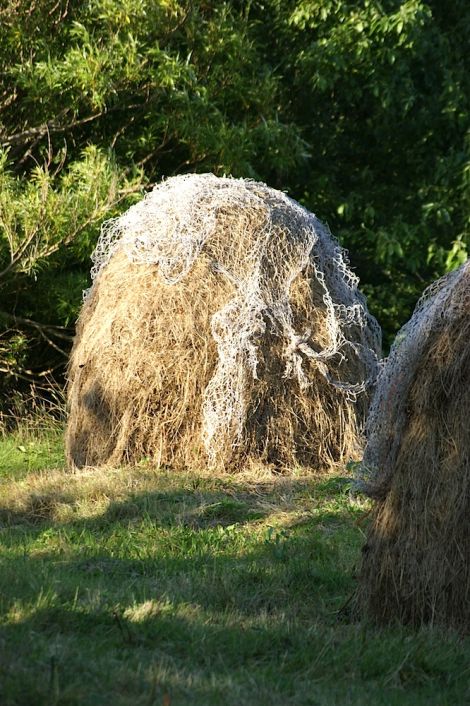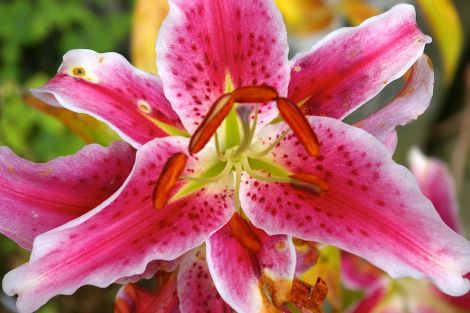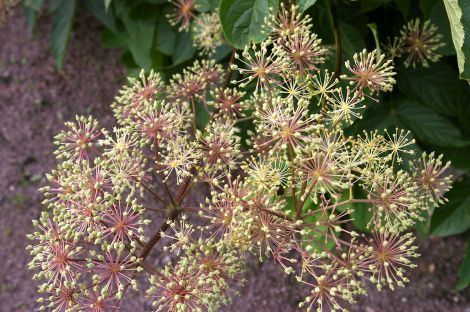Four Seasons / Four Seasons – Late Summer 2013
During a recent Gardeners’ Question Time programme, the panel asked the audience of allotment holders to give their verdict on the present summer.
The result was surprising. One third declared the present summer worse than the previous one. One third found the summer of 2013 considerably better than the summer of 2012, while the remainder declared there had been no difference at all.
There used to be a time when, during summer, hay coles dotted the fields of grass stubble the length and breadth of Shetland. In Tresta, ‘da Lea folk’ are just about the only ones still ‘bothering’ with hay; the rest of the village has moved on to silage.
Prevailing opinion has it that the summers are not what they used to be and making hay is no longer an option.
The ‘hay days’ are undoubtedly the most stressful time on our croft. Various weather forecasts must be scrutinised at regular intervals and a wadder eye kept on the sky.
Are those dark clouds approaching from the north-west going to sail past us on their south-easterly journey, or are they going to disgorge their wet load? Should we rush out there now to rescue what we can and let our tea get cold?
Unless we have one of those exceptional summers with long, dry spells, hay is never quite cured enough when the forecast changes for the worse and promises (or should that be threatens?) a week of fog and rain.
Putting hay up “green” or leaving it lying until the weather improves is a choice between the devil and the deep blue sea.
In 36 years of hay-making we’ve only experienced one “crop failure”, and a partial one at that. During the horrendously wet summer of 1979, the harvest from a small meadow, despite diligent turning and fluffing, was good only for the compost heap.
Become a member of Shetland News
I believe this high success rate is due to choosing the devil – getting the hay off the ground as soon as possible and – here comes the trick – sprinkling a handful of coarse saat between each thick layer as the coles get built.
This draws out moisture and, provided the coles are properly combed and netted, and no hay is allowed to drag on the ground, the curing process continues.
We’re told to make hay while the sun shines, but sun shine isn’t strictly necessary to the process; too much of it is actually detrimental to the quality of the end product, bleaching the grass too much and thus removing a great deal of the nutritional value.
At the end of the day, a little more sunshine, or a few more dry and breezy days would have made a difference, as some of the coles forked into the loft started smelling a bit fusty after compaction. Fungal spores in hay are detrimental to the respiratory systems of animals (horses are particularly susceptible) and cause the potentially fatal disease farmers’ lung in humans.
A bit more rumbling and shuffling about, bringing the bottom layers to the surface, combined with a grain more salt – all carried out wearing dust masks – has saved the day. The spore-laden dust has settled and all smells sweet now.
We have it on good authority that home-grown hay is far superior to even the best of imports and, always eager to please our small flock of Shetland sheep, pulled out all the stops this year and made three times the usual quantity.
During the great rush of July and August (hay, scores of visitors, clipping sheep, bagging and bringing home the peats), the garden invariably takes a back seat, usually with disastrous consequences. Beds and borders, left looking spick and span not all that long ago, are overgrown with weeds, and stately plants, heavy with rain, have broken free from their supports and lie sprawled across their neighbours.
However, there’s one herbaceous giant that needs no staking and is never slain by wind and rain. Aralia cashmeriana, at a height of two metres or more, makes a perfect seasonal lawn specimen with dark serrated foliage and great heads of fuzzy greenish-yellow flowers.
While faded glories are hard to restore, and the deeply shaded parts of the garden are now beyond all hope until the colchicums appear, a couple of days’ concentrated attention of the weeding and tidying kind have brought about changes bordering on the miraculous.
There is a world of difference between a border where geraniums, polemoniums and herbaceous potentillas have been allowed to sprawl and one where they have had a short back and sides in readiness for a another bite at the (flowering) cherry in the autumn.
A certain amount of dishevelment is to be expected at this time of year, and just as a shabby looking room can be rescued by one stunning piece of furniture, so can a flower bed.
The furnishings I have in mind are those tall, late lilies. They make marvellous focal points and draw the eye away from the less than perfect.
I’m particularly fond of an ancient stand of Orientals with great pink starfish flowers and the yellow form of the well-known spotted tiger lily, which not only blooms a little earlier than its orange counterpart, but displays rich amber shades at the bud stage.
And has this summer been worse, better, or the same as last year’s? Having spent some time in sweltering Germany I wasn’t sure how to pass verdict until I tasted our raspberries and decided that the 2012 crop was decidedly less shelpet than this year’s.
A little more 2013 sun wouldn’t have gone amiss.
Rosa Steppanova
Become a member of Shetland News
Shetland News is asking its many readers to consider paying for membership to get additional features and services: -
- Remove non-local ads;
- Bookmark posts to read later;
- Exclusive curated weekly newsletter;
- Hide membership messages;
- Comments open for discussion.
If you appreciate what we do and feel strongly about impartial local journalism, then please become a member of Shetland News by either making a single payment, or setting up a monthly, quarterly or yearly subscription.






























































